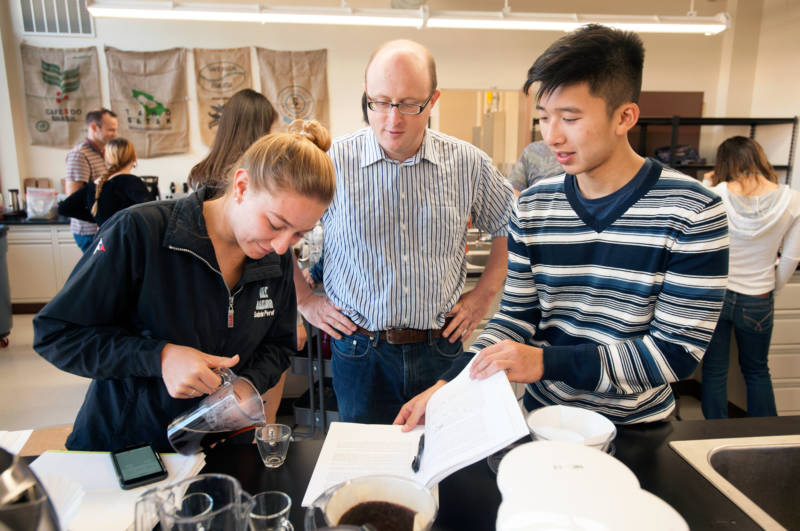Like so many brilliant innovations, the idea seems obvious in hindsight. Just combine college, coffee, and chemical engineering. Of course!
But no one, apparently, hit upon this magic formula until a few years ago, when William Ristenpart and Tonya Kuhl, two engineering professors at the University of California, Davis, started discussing ways to give young undergraduates a hands-on introduction to their new discipline. Engineering programs are creating such experiences in order to fight attrition; too many of these so-called STEM (science, technology, engineering and mathematics) students have been dropping out after a steady diet of mathematics in the first years of college.
Kuhl "had the idea of taking apart a Mr. Coffee coffeemaker" to study how the designers solved the small-scale engineering challenge of brewing coffee," says Ristenpart. As they talked, it dawned on Ristenpart that every aspect of coffee-making matched a major topic in the chemical engineering curriculum, from the chemical reactions of roasting, to mass transfer (when hot water extracts oils and flavor compounds from coffee grounds), and fluid dynamics, which control the flow of hot water and steam.
Together, Ristenpart and Kuhl turned the coffee problem into a seminar for first-year engineering students. The first year, in 2012, they had 18 students. The next term, 300 students signed up. Today, the course, called Design of Coffee, is the most popular elective class at the entire university. It fills the largest lecture hall on campus. Last year, the course was offered each term, and more than 1,500 students took it. Most of them weren't even engineering students.
"We have an army of teaching assistants," Ristenpart says. "Every graduate student wants to work with this class."
